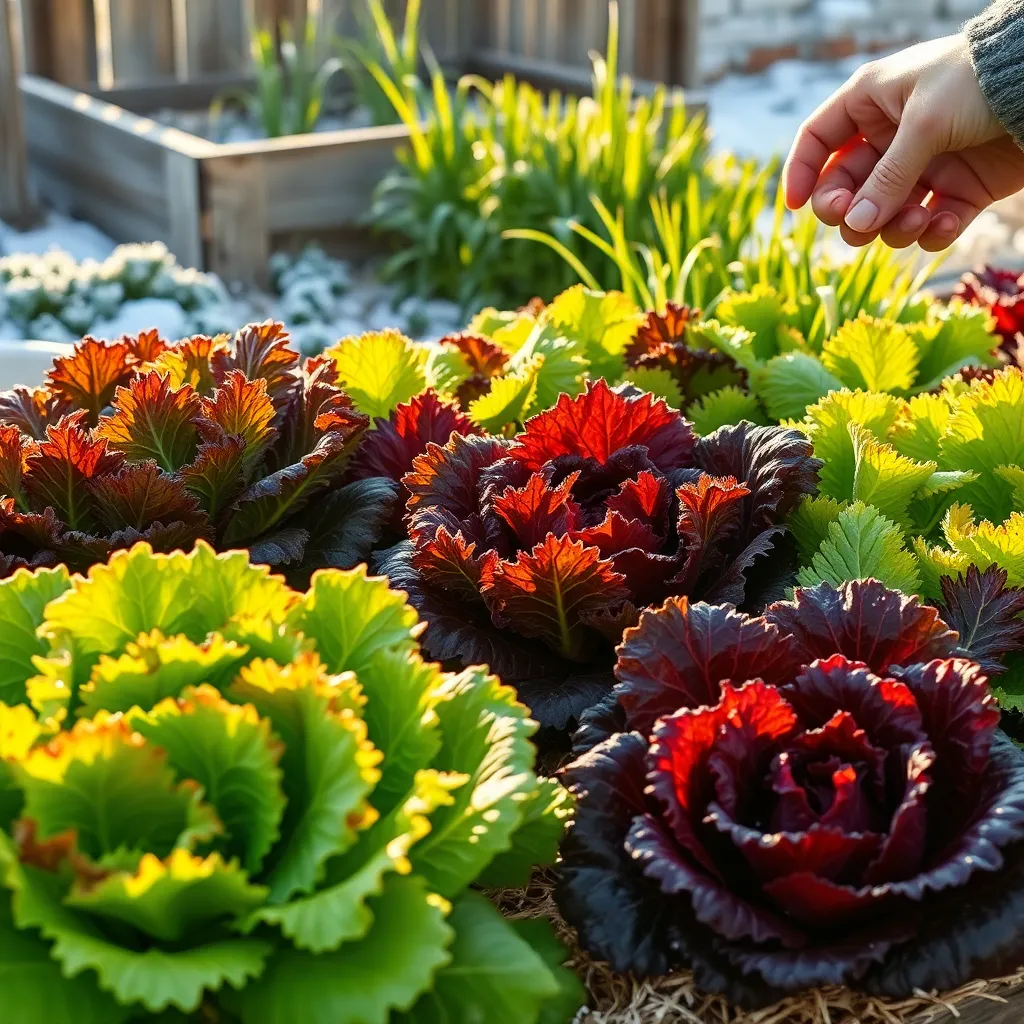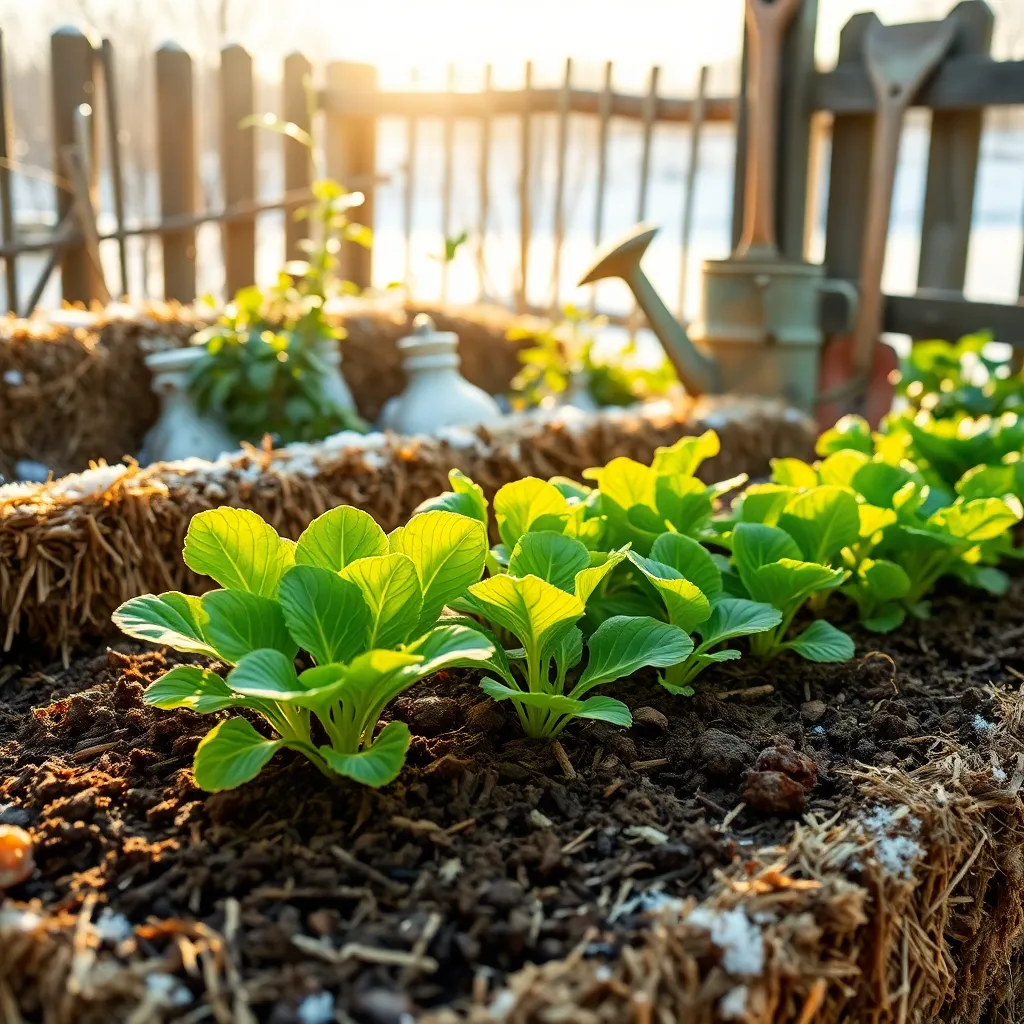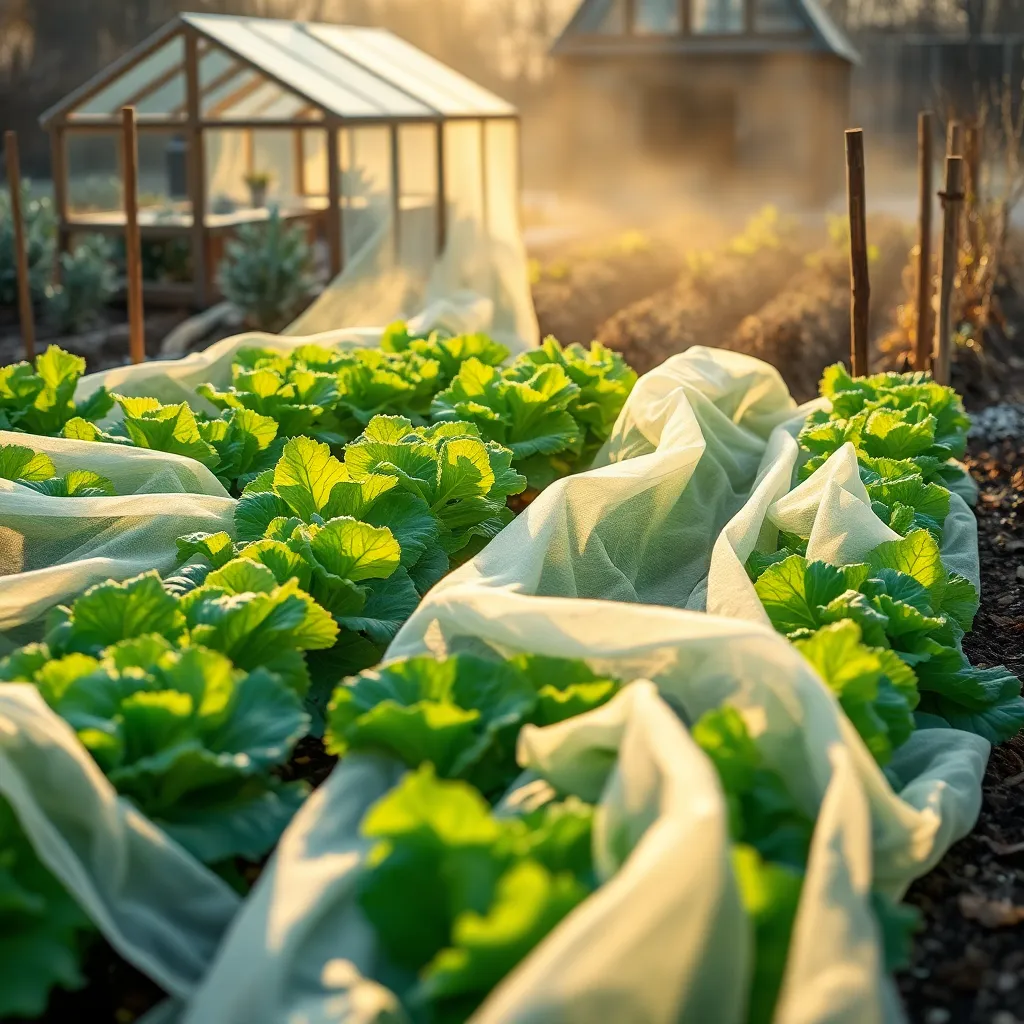As the crisp chill of winter settles in, many gardeners might think it’s time to hang up their gloves and put their gardens to rest. However, the hardy gardener knows that winter is just another opportunity to harness nature’s resources and grow something special—like fresh, vibrant lettuce. Whether you’re just starting your gardening journey or have years of experience under your belt, growing lettuce in winter can be a rewarding endeavor that fills your salad bowl with homegrown goodness.
Lettuce, with its tender leaves and refreshing crunch, is more resilient than you might think, making it a fantastic choice for winter gardening. In this article, you’ll discover how to cultivate lettuce during the colder months, transforming your garden into a year-round source of nutritious greens. From selecting the right varieties to mastering the art of extending your growing season, we’ve got you covered with practical advice and expert tips. Embrace the joy of nurturing your plants through the winter and enjoy the satisfaction of bringing fresh, flavorful produce to your table even when the world outside is frosted with snow.
Select Cold-Tolerant Lettuce Varieties

Choosing the right lettuce varieties is crucial for successful winter gardening. Some lettuce types are naturally more resilient to cold temperatures and can thrive even when the weather turns chilly.
One highly recommended variety is ‘Winter Density’, known for its ability to withstand frost and low temperatures. This butterhead and romaine hybrid offers a sweet flavor and crisp texture, making it a favorite among winter gardeners.
Another excellent choice is ‘Rouge d’Hiver’, a French heirloom variety that not only tolerates cold but also adds vibrant color to your garden. Its tender leaves develop a striking red hue as temperatures drop, providing both beauty and resilience.
For those looking for a fast-growing option, ‘Merveille des Quatre Saisons’ is a versatile choice. This variety can be sown in succession for a continuous harvest, ensuring a steady supply of fresh greens throughout the winter months.
Prepare Insulated Planting Area

To help your lettuce thrive through winter, focus on creating an insulated planting area. Start by selecting a location that receives ample sunlight, as this will help maintain soil warmth and promote healthy growth.
Consider using cold frames or cloches to provide an additional layer of protection. These structures can trap heat and create a microclimate, ensuring your lettuce stays shielded from harsh temperatures.
Incorporating mulch around your lettuce plants is another effective method to insulate the soil. Apply a layer of straw or shredded leaves, which will not only retain soil moisture but also keep the root zone warmer.
For gardeners seeking extra measures, installing a row cover can provide added insulation. Choose a lightweight fabric that allows light and moisture through while keeping out frost and cold winds.
Utilize Row Covers or Cold Frames

To extend your lettuce growing season into winter, utilizing row covers or cold frames can be highly effective. Row covers are typically made from lightweight fabric that allows sunlight, air, and moisture to reach the plants while providing protection from frost.
Setting up a row cover is straightforward and can be done with hoops and fabric available at most garden centers. Ensure that the edges of the fabric are securely anchored to prevent cold air from seeping in, which could affect your lettuce.
Cold frames offer a more robust solution for winter gardening. They are essentially mini-greenhouses, often made from wood or metal frames with a transparent lid that can be opened during warmer days to provide ventilation.
When building or purchasing a cold frame, opt for materials like polycarbonate or glass for the lid, as these provide good insulation and light penetration. Position the cold frame in a south-facing location to maximize sunlight exposure, which is crucial during the shorter winter days.
Both row covers and cold frames can help you maintain an optimal growing environment for lettuce, even when temperatures drop. For advanced gardeners, consider using a combination of both to offer additional layers of protection and extend your growing season even further.
Water Consistently in Cooler Weather

In cooler weather, it’s essential to water your lettuce consistently to ensure optimal growth. Lettuce requires moist soil, but you should avoid overwatering, which can lead to root rot.
Make sure to check the soil moisture regularly by sticking your finger about an inch into the soil. If it feels dry at that depth, it’s time to water.
Watering in the morning is ideal because it gives your lettuce time to absorb moisture before temperatures drop in the evening. Use a gentle spray to avoid disturbing the soil and the delicate lettuce leaves.
For those with more experience, consider using a drip irrigation system to maintain consistent moisture levels. This technique is especially useful in cooler climates, where water evaporation is slower.
Mulching around the base of the plants can help retain soil moisture and regulate temperature. Organic mulches, such as straw or shredded leaves, work well and also enrich the soil as they decompose.
Monitor for Pests and Diseases

Monitoring your lettuce for pests and diseases is crucial during the winter months. Regularly inspect the undersides of leaves and the base of plants, as these are common hiding spots for pests such as aphids and slugs.
Begin by examining your lettuce plants at least once a week, focusing on any signs of damage or discoloration. Yellowing leaves or holes can indicate pest activity, so take action promptly to prevent further damage.
One practical way to manage pests is by using physical barriers, such as floating row covers, which can help keep unwanted insects away. Additionally, introducing beneficial insects like ladybugs can naturally reduce aphid populations without the need for chemical treatments.
It’s also important to watch for signs of disease, such as powdery mildew or downy mildew, which can thrive in cooler, damp conditions. Ensure good air circulation around your lettuce plants by spacing them adequately and removing any dead or diseased foliage.
To prevent diseases from taking hold, consider using a fungicidal spray made from baking soda and water as a preventative measure. Keeping your garden tools clean and sanitized between uses can also help minimize the spread of diseases.
Conclusion: Growing Success with These Plants
As we wrap up ‘How to Grow Lettuce in Winter,’ let’s revisit the five relationship concepts that underscore both horticulture and human connection: patience, adaptability, nurturing, communication, and resilience. Just as lettuce requires care and adaptability to thrive in winter’s chill, so too do relationships require ongoing effort and flexibility to flourish in life’s varied seasons. By practicing patience and nurturing, understanding the importance of clear communication, and fostering resilience, we can cultivate relationships that are as rewarding as a winter harvest.
Your actionable next step is to identify one relationship in your life that could benefit from a little extra care. Perhaps it’s reaching out to a friend you’ve lost touch with or spending quality time with a loved one. Make a small, meaningful gesture today.
Remember, nurturing relationships is an ongoing journey, and having resources at your fingertips can be invaluable. Save or bookmark this article for future reference, so you can revisit these concepts whenever needed.
Looking ahead, the effort you invest in your relationships now will yield a bountiful harvest of connection, understanding, and love. Empower yourself to take these steps and watch your relationships thrive, even in the coldest of seasons.
